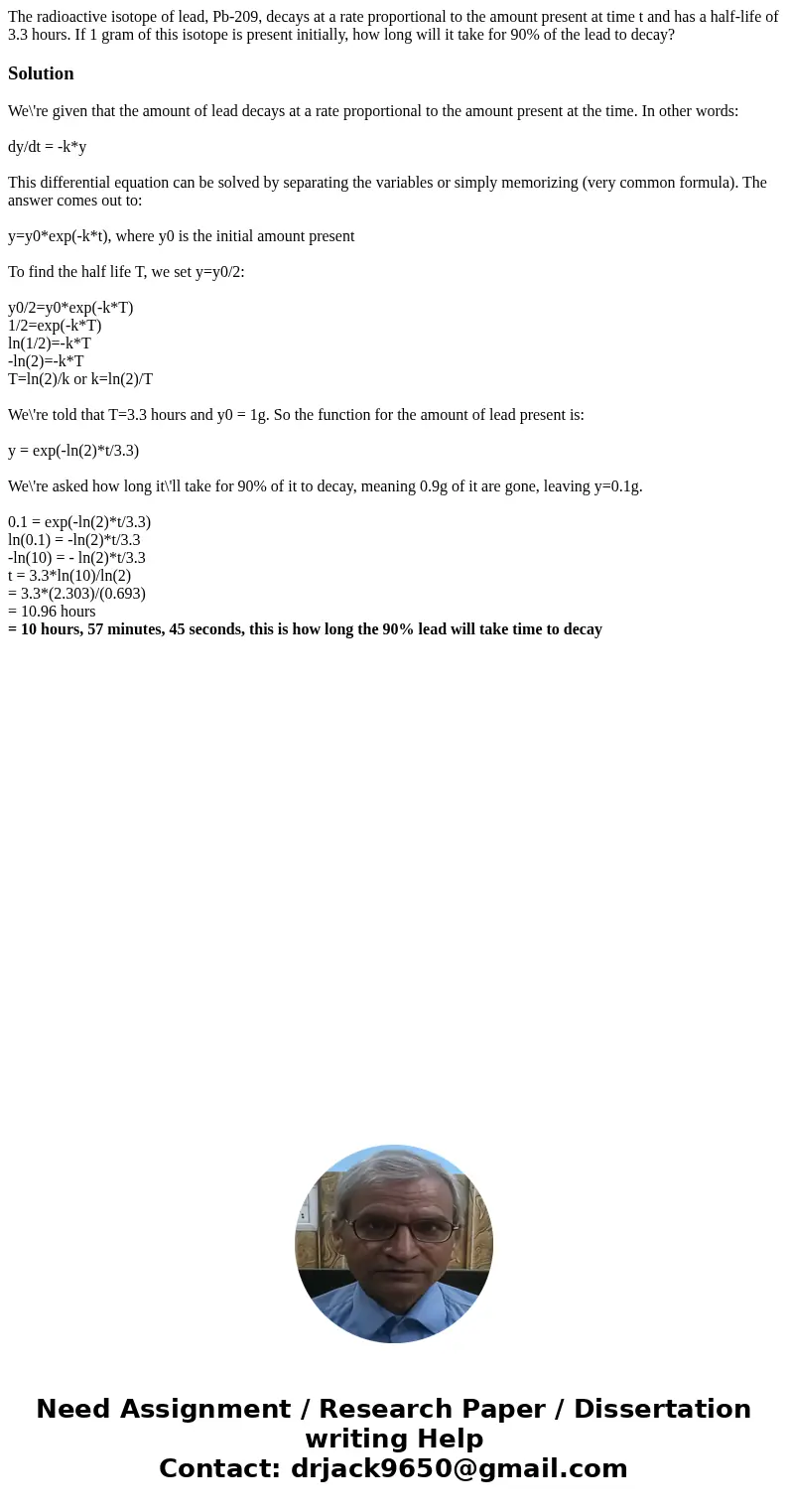The radioactive isotope of lead Pb209 decays at a rate propo
Solution
We\'re given that the amount of lead decays at a rate proportional to the amount present at the time. In other words:
dy/dt = -k*y
This differential equation can be solved by separating the variables or simply memorizing (very common formula). The answer comes out to:
y=y0*exp(-k*t), where y0 is the initial amount present
To find the half life T, we set y=y0/2:
y0/2=y0*exp(-k*T)
1/2=exp(-k*T)
ln(1/2)=-k*T
-ln(2)=-k*T
T=ln(2)/k or k=ln(2)/T
We\'re told that T=3.3 hours and y0 = 1g. So the function for the amount of lead present is:
y = exp(-ln(2)*t/3.3)
We\'re asked how long it\'ll take for 90% of it to decay, meaning 0.9g of it are gone, leaving y=0.1g.
0.1 = exp(-ln(2)*t/3.3)
ln(0.1) = -ln(2)*t/3.3
-ln(10) = - ln(2)*t/3.3
t = 3.3*ln(10)/ln(2)
= 3.3*(2.303)/(0.693)
= 10.96 hours
= 10 hours, 57 minutes, 45 seconds, this is how long the 90% lead will take time to decay

 Homework Sourse
Homework Sourse